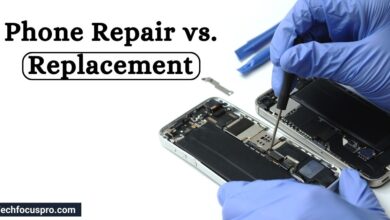Uses of Linear Actuators across Different Sectors

Linear actuators are mechanisms that transform how people automate tasks across various sectors, from their homes to industries. Their ability to create straight-line motion makes them essential in numerous applications, enhancing efficiency and precision. Explore the practical uses of linear actuators in different sectors, showcasing how these devices can simplify everyday tasks and improve operational effectiveness.
In recent years, the demand for automation has surged, with linear actuators leading the charge in this evolution. These powerful devices convert energy into linear motion, making them vital in a wide range of applications. According to a report by MarketsandMarkets, the global linear actuator market is expected to reach $12.5 billion by 2026, reflecting their growing importance in automation technology and highlighting actuator versatility.
Linear Actuators and Their Role in Automation
A linear actuator is a mechanical device that converts rotational motion into linear movement. This technology is pivotal in various sectors, including manufacturing, agriculture, home automation, and renewable energy systems.
These motors can be powered by electricity, hydraulics, or pneumatics, making them adaptable to different environments and applications. Among these, electric actuators are particularly favored for their energy efficiency, precise control, and ease of integration in modern automated systems. Their ability to deliver reliable and repeatable movement makes them ideal for both residential and industrial use.
Linear Actuators Applications and Sectors

Linear actuators serve across numerous industries due to their reliability and efficiency. Their most common applications include:
Home Automation
Linear actuators are vital in enhancing comfort and convenience in home automation. These devices can control various elements within a home environment, such as doors, windows, and blinds. For instance:
Automated Blinds and Curtains
One of the most practical applications of these devices is in creating automated window blinds. Using a linear actuator, you can program your blinds to open and close at specific times or in response to sunlight levels.
Materials: a linear actuator, a microcontroller (like an Arduino), a power supply, and the blinds.
Steps:
- Attach the linear actuator to the window frame and connect it to the blinds.
- Program the microcontroller to control the actuator based on time or light sensors.
- Test the system to ensure smooth operation.
This project not only adds convenience but also helps to manage indoor temperatures and lighting efficiently.
Adjustable Height Desk
Building an adjustable height desk using linear actuators is a fantastic way to enhance your workspace’s ergonomics. This project allows you to raise or lower your desk at the touch of a button, promoting better posture and comfort.
Materials: two linear motors, a desk surface, and a control switch.
Steps:
- Securely mount the motors to each side of the desk frame.
- Connect the device to a control switch that can be easily accessed.
- Ensure that the desk surface is balanced and can move freely without obstruction.
This project will be beneficial for those who spend long hours at their desks, allowing for easy transitions between sitting and standing.
Automated Pet Door
An automated pet door using a linear actuator can provide convenience for pet owners while enhancing home security. This system allows pets to enter and exit without needing manual operation.
Materials: a small linear actuator, sensors (like RFID or weight sensors), and a door mechanism.
Steps:
- Install the actuator on the door frame connected to the pet door flap.
- Set up sensors that detect when your pet approaches.
- Program the system so that when the sensor is triggered, the actuator opens the door flap automatically.
This project not only simplifies life for pet owners but also ensures that only your pets can access the door.
Agriculture
Linear drivers in agriculture revolutionize how farmers manage their operations. These devices are beneficial in:
Irrigation systems: Motors automate valve controls for efficient water distribution.
Greenhouse automation: They can regulate ventilation systems by opening or closing vents based on temperature and humidity levels.
Precision farming: By allowing for precise control over irrigation and environmental conditions, farmers can optimize resource usage and improve crop yields. This technology reduces labor costs and enhances productivity while promoting sustainable farming practices.
Solar Panels
In the field of renewable energy, linear actuators are essential for maximizing the efficiency of solar panels. These devices enable:
Solar tracking systems: Linear actuators adjust the angle of solar panels throughout the day to follow the sun’s path, significantly increasing energy capture.
Tilt mechanisms: They allow panels to be tilted during off-peak seasons for optimal exposure.
By utilizing linear drivers for solar panel systems, homeowners and businesses can enhance their energy efficiency and reduce reliance on traditional power sources.
Automation
The versatility of linear actuators extends into industrial automation processes where they are integral to various applications:
Manufacturing: Linear motors facilitate assembly line operations by moving components with precision.
Packaging: They automate packaging processes by controlling conveyor belts and sealing machines.
Robotics: In robotic systems, these actuators provide movement capabilities essential for tasks such as welding or material handling.
Industrial Settings
In industrial settings, electric actuators are commonly used due to their energy efficiency and low maintenance requirements. They provide controlled speed and force while ensuring high levels of accuracy – critical factors in manufacturing environments where quality control is paramount.
Final Remarks
Linear actuators offer endless possibilities for innovation and automation, empowering you to enhance efficiency in your projects and daily life. Embrace the potential of these versatile devices and start exploring creative DIY applications that can transform your home, workspace, or garden today!
FAQs
What are linear actuators, and how do they work?
Linear actuators are devices that convert rotational motion into linear (straight-line) motion. They use mechanisms like screws, gears, or hydraulic/pneumatic pressure to create precise movement and are powered by electricity, hydraulics, or air.
In which industries are linear actuators commonly used?
Linear actuators are widely used in industries such as:
- Automation: For robotic arms and assembly lines.
- Medical: In hospital beds, surgical tables, and mobility aids.
- Agriculture: To automate machinery like sprayers and harvesters.
- Aerospace: For cockpit adjustments and satellite systems.
- Home Automation: In motorized windows, doors, and adjustable furniture.
What are the benefits of using linear actuators in industrial applications?
Linear actuators offer:
- High precision and control.
- Low maintenance and durability.
- Compact designs for small spaces.
- Compatibility with automation systems.
- Energy efficiency and adaptability to various tasks.
What types of linear actuators are available, and how are they chosen for specific sectors?
Electric actuators for precision and low noise (used in medical devices).
Hydraulic actuators for heavy loads (used in construction and industrial equipment).
Pneumatic actuators for high-speed applications (used in packaging and factory automation).
Selection depends on load requirements, speed, environment, and power source availability.
How do linear actuators contribute to advancements in technology?
Linear actuators drive technological advancements by enabling precise and efficient motion control in various fields. They play a critical role in automation, powering robotic arms, assembly lines, and factory systems.
In consumer technology, they enhance ergonomics in adjustable furniture and home automation devices. Their precision and reliability make them essential in robotics for applications like surgery and complex manufacturing.
Additionally, linear actuators support innovations in miniaturized medical devices and electronics. Their versatility ensures widespread use in advanced fields like aerospace, renewable energy, and smart infrastructure, making them a cornerstone of modern technological progress.






